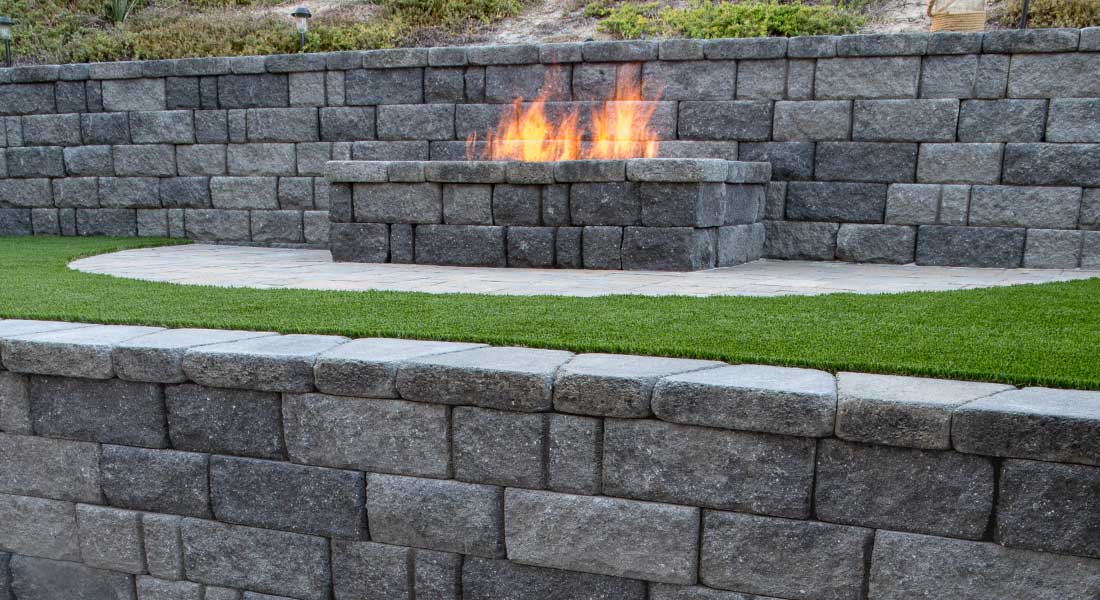These blocks aren’t just a functional element. They are now the kings of outdoor design. Seamlessly merging functionality and aesthetics, these versatile elements are now essential components in modern landscape design. This article focuses on the numerous benefits of retaining walls, and provides insight into how they can transform outdoor environments.

The retaining wall block has the potential to redefine the traditional hardscape elements. It is available in a myriad of sizes, colors and shapes. It allows homeowners to express their own unique aesthetic ideas. Made from the unfinished nature of stone or the strong embrace of concrete, these block provide a myriad of design possibilities. Landscape architects and designers discover the blocks an essential tool for creating cohesive and captivating outdoor spaces that echo the distinctiveness of the environment.
Beneath the Surface Allure: Guardians of Stability
Beyond their visual allure, retaining wall blocks unfold a plethora of functional benefits. As custodians of the landscape they protect them from erosion. These blocks provide stability to uneven or sloped terrains. They transform uneven landscapes into sanctuaries that are level and suitable for a peaceful outdoor lifestyle and flourishing gardens.
Wall blocks that are retained for the wall are an efficient and affordable option for homeowners who wish to improve their landscapes. The ease of installation and low maintenance requirements make retaining wall blocks an affordable solution. They’re not just visually appealing, they also serve as a the stability and durability of a wall that doesn’t compromise on aesthetics.
Versatile Sculptors: Defining Outdoor Living Areas
Wall blocks with retaining walls surpass their purpose changing into sculptures that define and mark outdoor living spaces. Through strategic integration property owners can establish distinct areas for different activities like such as dining al-fresco, relaxing or gardening. These blocks are not just practical, but also serve as design elements. They can serve as privacy barriers or highlight specific features of the landscape, like sculpture gardens or water features.
They stack efficiently and can hold up to three courses in height. The blocks can be stacked as high as three levels before the need for geogrid reinforcement is required for soil strengthening. The larger the configurations the better stability and durability are required as walls increase in height. These blocks, which are carefully designed to ensure seamless interlocking and structural soundness they provide a solid foundation to landscaping plans. Geo-grid reinforcements provide durability and resilience to the walls for retaining, which allows them to withstand the soil’s pressure.
Choose the Right Block to Create the right Ambiance
When choosing retaining walls, you must carefully consider the size, shape, and shade of each block in relation to your outdoor space. The decision to build retaining walls is influenced by functional aspects such as height and soil retention. This carefully chosen selection will not only guarantee structural integrity but also provides visual harmony and enhances the overall appearance.
Conclusion Symphony of Resilience
In the end, retaining wall blocks emerge as transformative elements in the design of landscapes, contributing to sustainable and resilient landscaping practices. Due to their limitless possibilities for design, their capacity to protect and stabilize, in addition to their capacity to define living spaces they are transformed into silent sentinels, which redefine outdoor areas. They create a tale of harmony, timelessness and beauty throughout the landscape. From a minimalist look to practical durability, retaining walls stand as the artisans shaping the music of nature’s outdoors.
